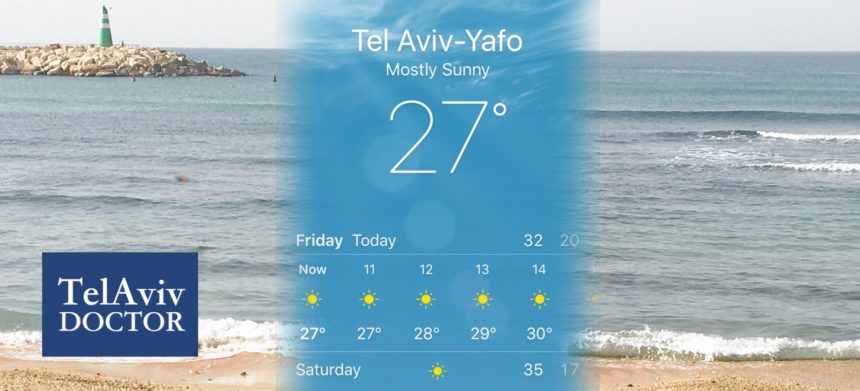Heat Exhaustion and Heat Stroke are serious conditions caused by exposure for long periods of time to heat, for example staying a long time outdoors, or exercising in very hot weather, and are usually compounded by dehydration. This is our second of three posts on Summer Heat Health Risks.
The health risks connected to hot weather are the reason why major sporting events in Israel do not occur in the height of summer, or if they happen around summer time are scheduled to start in very early morning or at night out of the aggressive heat of the day.
Even with the best intentions, sometimes the heat can get the better of us, and all of us as individuals will have different thresholds for what our body can tolerate, with the elderly and young children being most at risk.
Signs of Heat Exhaustion
The most important symptoms of heat exhaustion to look out for are the following, and should be taken seriously to try and prevent the further development of the more severe ‘heatstroke’:
- Intense thirst
- Temperature more than 37 degrees Celsius
- Nausea and loss of appetite
- Feeling clammy (sweaty) with pale skin
- Feeling dizzy or faint
- Cramping in the arms, legs or stomach
If a person has these symptoms and has been exposed to heat, try to cool them down. Move them to a cool place and take off any unnecessary clothing to help reduce their body temperature. Give them plenty of fluids. It is also a good idea to lie them down and raise their legs up to help blood flow back to the heart and brain. The skin can also be cooled by using a damp sponge or by spraying them with water and using a fan.
Signs of Heat Stroke
If after 30 minutes of using these measures a person shows no improvement, or develops the following symptoms, they must seek immediate medical attention. These are symptoms of the less common, but more serious, heatstroke:
- Temperature of 40 degrees Celsius or higher
- Hot, dry skin (that is no longer sweaty)
- Increasing confusion
- Loss of consciousness- they cannot be roused
- Seizure/ convulsion
- Rapid pulse and breathing
It is important to note that children may not display these symptoms in the same way adults do. Young children especially may become floppy or sleepy. If you have any concerns at all about your child, seek advice.
Dehydration, How To Remain Well In The Heat
Read up about Dehydration in post 1, and Tips How To Remain Well In The Heat in post 3 of our mini-series about Summer Heat Health Risks.



